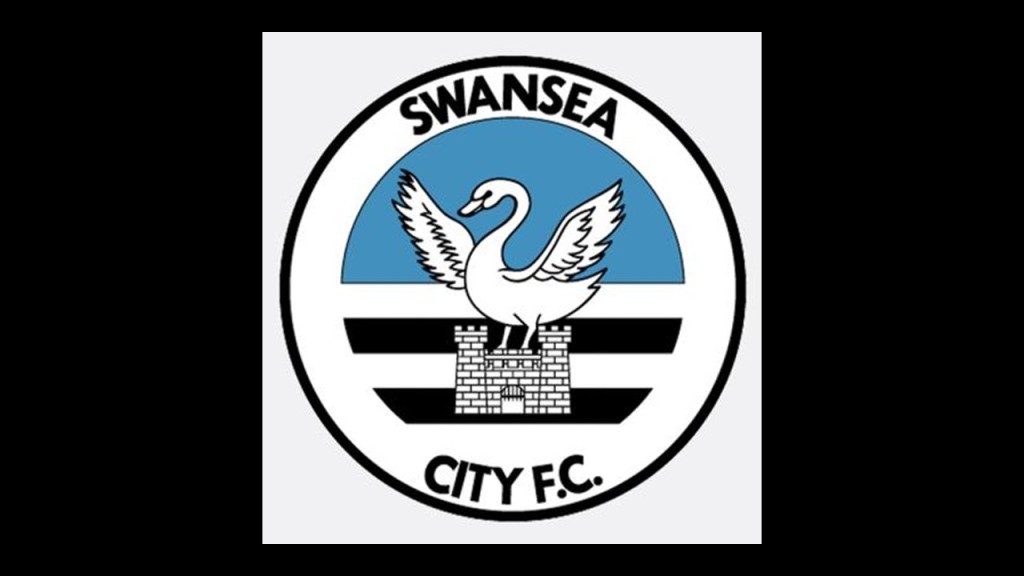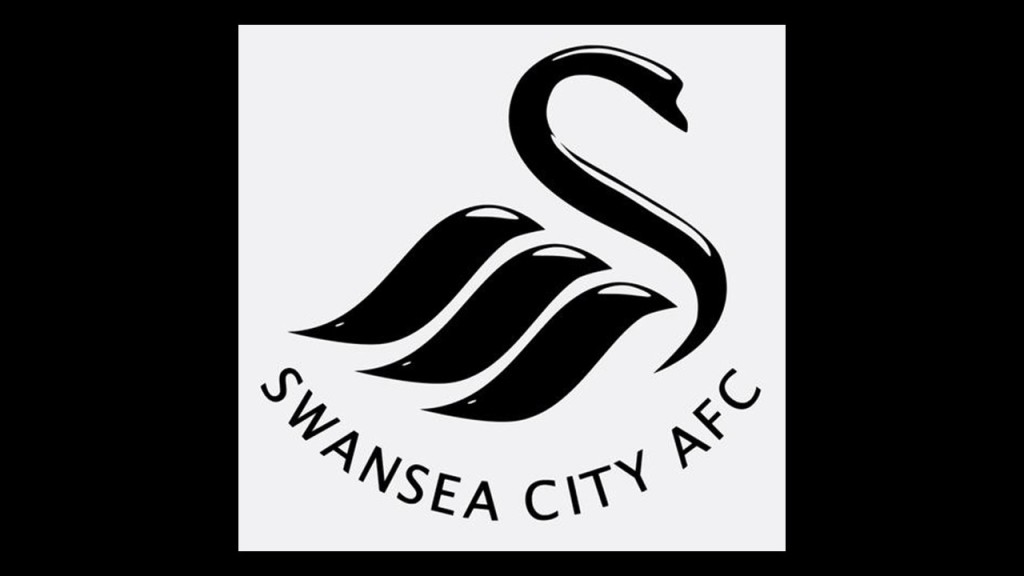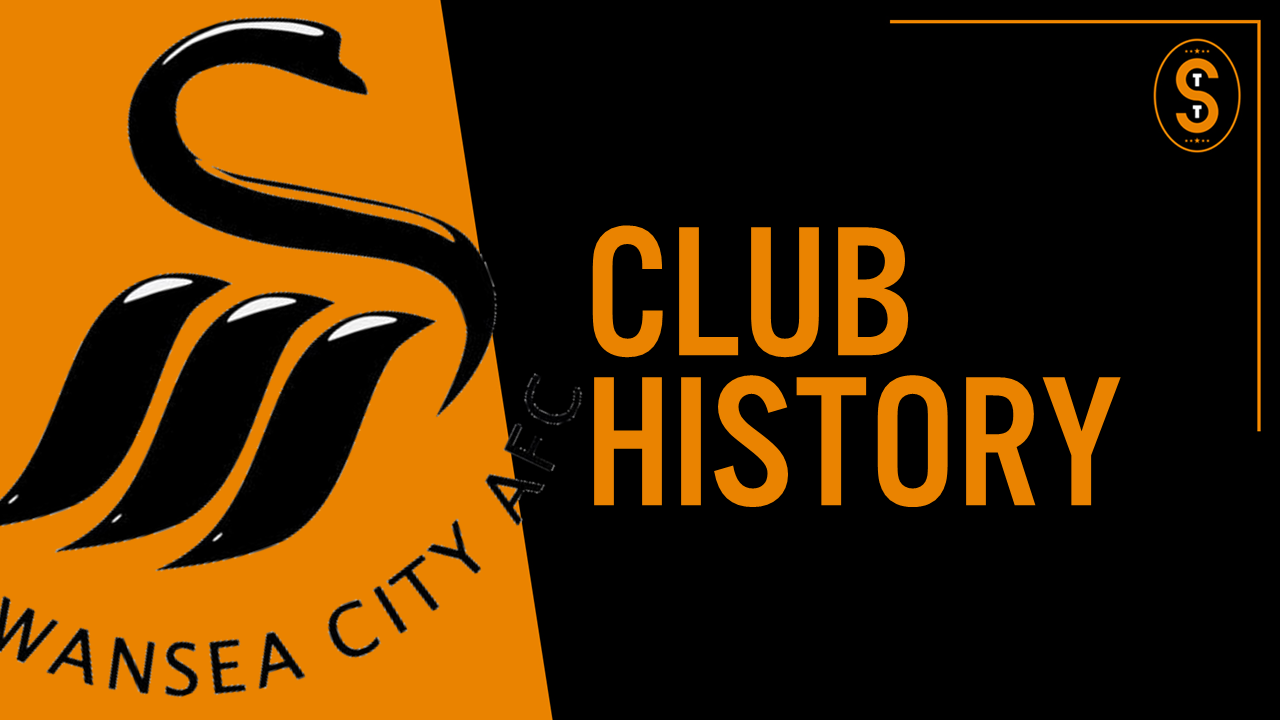Welcome to the Soccer Tavern, where we’re discussing the history, culture, and philosophy of the beautiful game. My name is Dave and in this video, we’re talking about the history of Swansea City A.F.C, which stands for Association Football Club. Pull up a seat and let’s start the discussion.
Swansea City AFC is located in the northern part of the city of Swansea. Swansea is located along the southern coast of Wales, in the United Kingdom. The club currently play in the Premier League (this was accurate at time of recording in March 2018 when the club was still in the Premier League) and its home ground is called the Liberty Stadium, which opened in 2005 and holds about 21,000 people.
Origin
Due to rugby’s overwhelming popularity in the surrounding area, soccer got started late in the town of Swansea. Kids and some amateur adult squads played in local leagues in the 1890s and early 1900s but none of them seemed to last. There was however, growing momentum for the sport as the local Swansea League had about 2,500 registered players in 1911. On January 21, 1912, Harry Bradshaw, a former successful manager in England and newly appointed Secretary of the Southern League, met with local citizens of Swansea to encourage the formation of a professional club in Wales’ second largest town.
The townspeople responded and J.W. Thorpe organized a meeting on June 14, 1912 at the Royal Hotel in Swansea. At that meeting the club of Swansea Town Association Football Club was officially formed. Thorpe was appointed the club’s first chairman. Due to rugby’s prevalence in the area, the club used Association Football Club (AFC) rather than the more prevalent in England naming convention of Football Club (FC) for its name.
It wasn’t until 1971 when the town of Swansea was granted city status that the club changed its name to Swansea City AFC.
Nicknames
The club has 2 nicknames: the Swans & the Jacks.
The swans nickname is clear as it comes from the club and city’s name. It’s the officially recognized club nickname.
Another nickname for the club and people from Swansea are Swansea Jacks or simply Jacks. There’s 2 possible explanations for this name.
The first is that in the early 19th century sailors from Swansea, who were renowed for their hard work and skills on the seas, wore clothes that were jack tarred in order to protect them from the harsh elements of being on the open sea. They were known as Swansea Jacks and this is likely the explanation of the nickname.
The second and my personal favorite story for the nickname comes from a black Labrador retriever who was born in 1930 named Jack. He lived with his owner near the sea and was reported to have saved 27 people from the water during his life. Jack would jump into the water when people cried for help and drag them to safety on land.
In all likelihood, the Jack tar pants explanation is likely more accurate, but the black lab story is an awesome anecdote that I needed to share.
Crest
Like most other clubs, Swansea used their town’s coat of arms to represent their club as their first crest.

By the 1980s, the club implemented a crest with a swan on top of a castle. The swan obviously representing the club and its nickname and the castle representing the castle of Henry de Beaumont, which was built in 1099. This castle was the focal point around which the town of Swansea was built.

Versions of this crest were used until 1998 when the club unveiled the sleek, modern and elegant Swan crest used by the club today. Swansea experimented with different colors and incorporated a circle to enclose the crest but have thankfully settled back on this simple, black & white crest.
Important Events
Now let’s talk about 4 events in the club’s history.
On May 2, 1981 Swansea travelled to Preston North End for the final league match of the season knowing a win would grant Swansea promotion to the first division for the first time in the club’s history. Ten thousand Swansea supporters made the Journey to the Northwest of England to watch the match. Swansea took a 2-0 lead into half, but Preston got a goal in the 78th minute to make things nervy. Thankfully, an 87th minute goal for Swansea sealed the victory and sent the travelling Swansea fans into pandemonium. The victory secured a miraculous third promotion in 4 seasons for the club qualifying it for the top flight for the first time in its history.
Only a few years later, Swansea suffered consecutive relegations and on December 20, 1985, the club was given a winding up order – basically the start of bankruptcy. Fortunately, a group of directors was able to rescue the club and by January 1986, the club was allowed to continue with the winding up order rescinded. These directors saved the club from possible extinction. Unfortunately, that wasn’t the only time the club was saved from financial trouble, but we’ll talk about that in our next section.
Our third event I want to highlight comes from the 2002-2003 season. The club was in danger of being relegated out of the Football League, meaning they would become semi-professional. On May 3, 2003, which was the final day of the season, Swansea beat Hull City 4-2 to secure safety by only 1 point. Hull took a first half lead in the match, but the Swans levelled by halftime and scored 2 goals in the 2nd half to remain in the Football League and begin their rise up the English soccer pyramid.
And our last event for this section happened on February 24, 2013. Swansea City played Bradford City in the League Cup final at Wembley. Swansea absolutely demolished the Cinderella story Bradford City squad as the Swans were up 2-0 at halftime before adding 3 second half goals. It is Swansea’s only major trophy in the 100+ year history of the club and a truly special day for the club.
Supporters
You can’t really talk about Swansea supporters without talking about the Swansea City Supporters Trust. The Swansea City Supporters Trust was formed in the summer of 2001 by supporters of the club in response to the club’s precarious financial position at that time.
The club then went through a terrible ownership situation before a local ownership group took control of the club in January 2002. As a result of the takeover, the Swansea Supporters Trust took about a 20% stake in the club and held a seat on the board of directors. This ownership structure still remains with Swansea fans owning 21% of the club through this trust in one of the more unique ownership structures in the Premier League.
Noteworthy Players
Gylfi Sigurdsson is one of the most talented players in Swansea history. He made 131 appearances for the club, scoring 37 goals and his quality on the ball combined with great work rate, make him one of the most celebrated players in Swansea history before he left for Everton in the summer of 2017.
Leon Britton has over 500 appearances for the club and has been a great servant for the club.
Ivor Allchurch is one of the greatest players in the club’s history, remaining with his hometown club despite having the talent to sign with teams in higher divisions. He made 445 appearances for the club and scored 164 goals.
Alan Curtis is nicknamed Mr. Swansea City as he played at the club and has been involved with management/administration side of Swansea for over 40 years. He played 437 times for Swansea, scoring 123 goals.
One last interesting player to mention: Giorgio Chinaglia got his professional start with Swansea but moved on shortly after. He went on to have a very successful career in Italy and the United States, earning 14 caps for the Italian National team, and starring for the New York Cosmos in the old NASL.
Noteworthy Managers
Swansea have had many managers in the club’s history but I’m going to highlight 3 here.
John Toshack managed Swansea from 1978 to 1984. He was manager for the Swans’ promotion campaign in the 1980-81 season that saw them enter the top flight for the first time in their history.
Brendan Rodgers managed Swansea from 2010-2012. He made some excellent signings and implemented a tactical style that led Swansea back to promotion to the top flight. After sustaining Swansea in the Premier League, he moved to Liverpool and almost won the Premier League title in the 2013-2014 season with that club before falling short. He now manages Celtic who dominate the Scottish Premier League.
Michael Laudrup took over for the departed Brendan Rodgers in 2012. He was a former great player and led Swansea to their first and only major trophy, the 2013 League Cup win. He was sacked in February 2014 but will live forever in Swansea’s history books.
Rivals
Cardiff City is by far Swansea’s biggest and most fierce rival. The two cities are 40 miles apart and are Wales’ two largest metropolitan areas. The rivalry really extends beyond just the sport with many Welsh citizens feeling Cardiff gets preferential treatment and funding from the government while other areas including Swansea don’t enjoy quite the same benefits.
The rivalry from a soccer perspective wasn’t always as intense, but the hooliganism of the early 80s provided the spark between the fanbases to make this a full-blown rivalry. The two clubs have met many times across the divisions and cups of English soccer and the animosity between the fans is felt by the players, making this one of the most intense rivalries in Britain.
Cardiff hasn’t played in the same division as Swansea for a few years. This hasn’t quite diminished the rivalry between the two clubs, but it has opened the opportunity for Swans supporters to develop a new rival. Surprisingly, Stoke City can be considered one of Swansea’s biggest current rivals. This is a recent development as both clubs have enjoyed an extended run in the Premier League. There have been a handful of controversial incidents involving diving and hard fought matches in recent seasons that have made Stoke into something of a rival for Swansea fans.
Stats & Records
The stats and records we’re about to discuss are as of March 2018 when we are recording this video.
The Swans have spent 9 seasons in the top flight in their history.
The club’s only major trophy is the 2013 League Cup though Swansea has won 11 Welsh Cups.
The club’s record first team league appearance holder is Wilfred Milne with 585 appearances.
The club’s record league goal scorer is Ivor Allchurch with 166 goals.
The Swans’ record transfer purchase was Andre Ayew from West Ham United on January 31, 2018 for about £18M.
And the club’s record transfer sale was Wilfried Bony to Manchester City on January 14, 2015 for about £25M.
And 2 last interesting facts about the club:
(1) Swansea were the first Welsh side to play in Europe, qualifying for the European Cup Winners’ Cup after winning the 1961 Welsh Cup.
(2) For those who don’t know the story of Cyril the Swan, Swansea’s notorious mascot, please read this article from Howler Magazine. It’s well worth your time.
So there you have it… a bit of history on Swansea City Football Club. Let’s continue the discussion in the comments section below this video.
Thanks for stopping by the Soccer Tavern. Hope to see you again sometime soon. Cheers.
